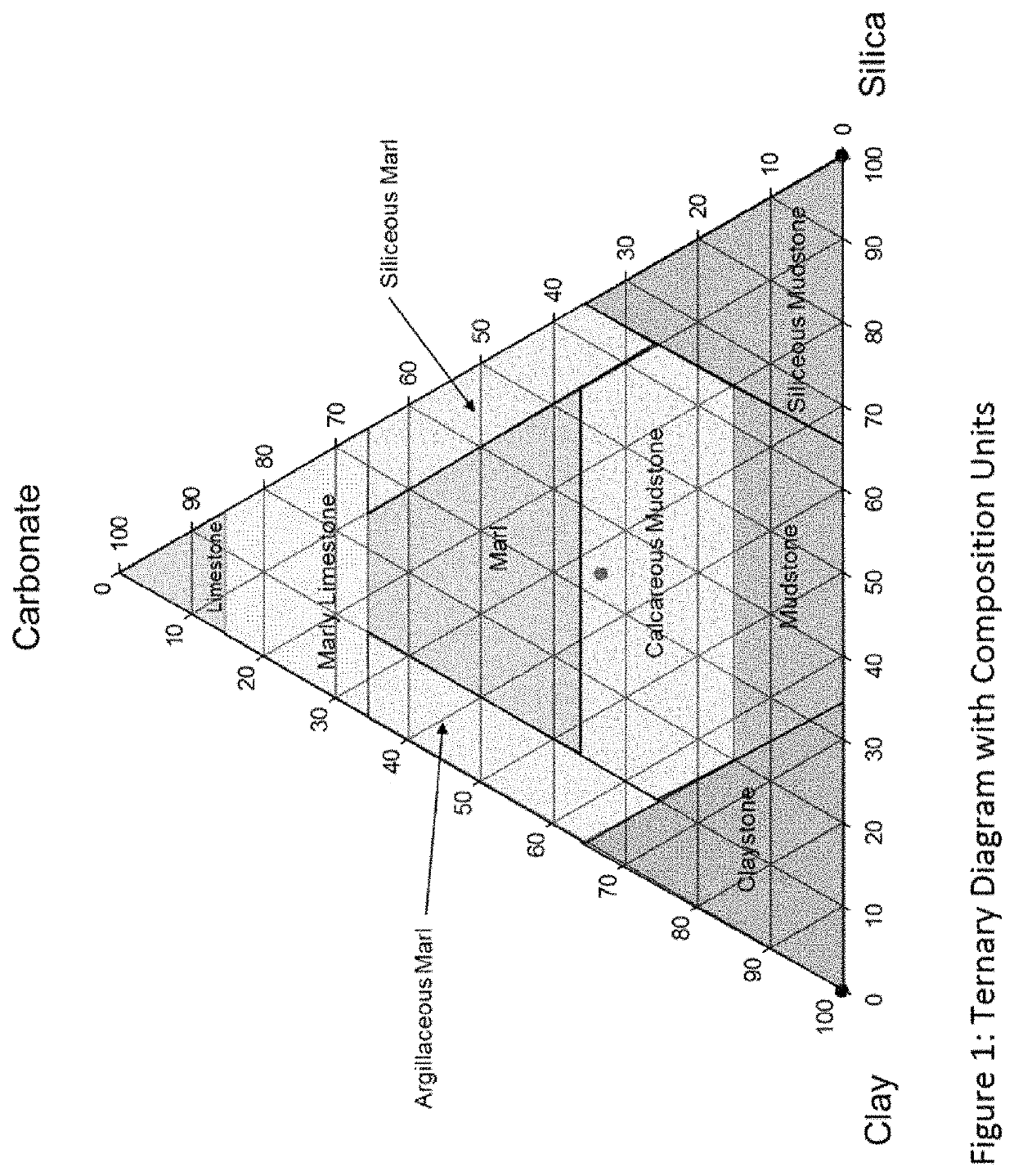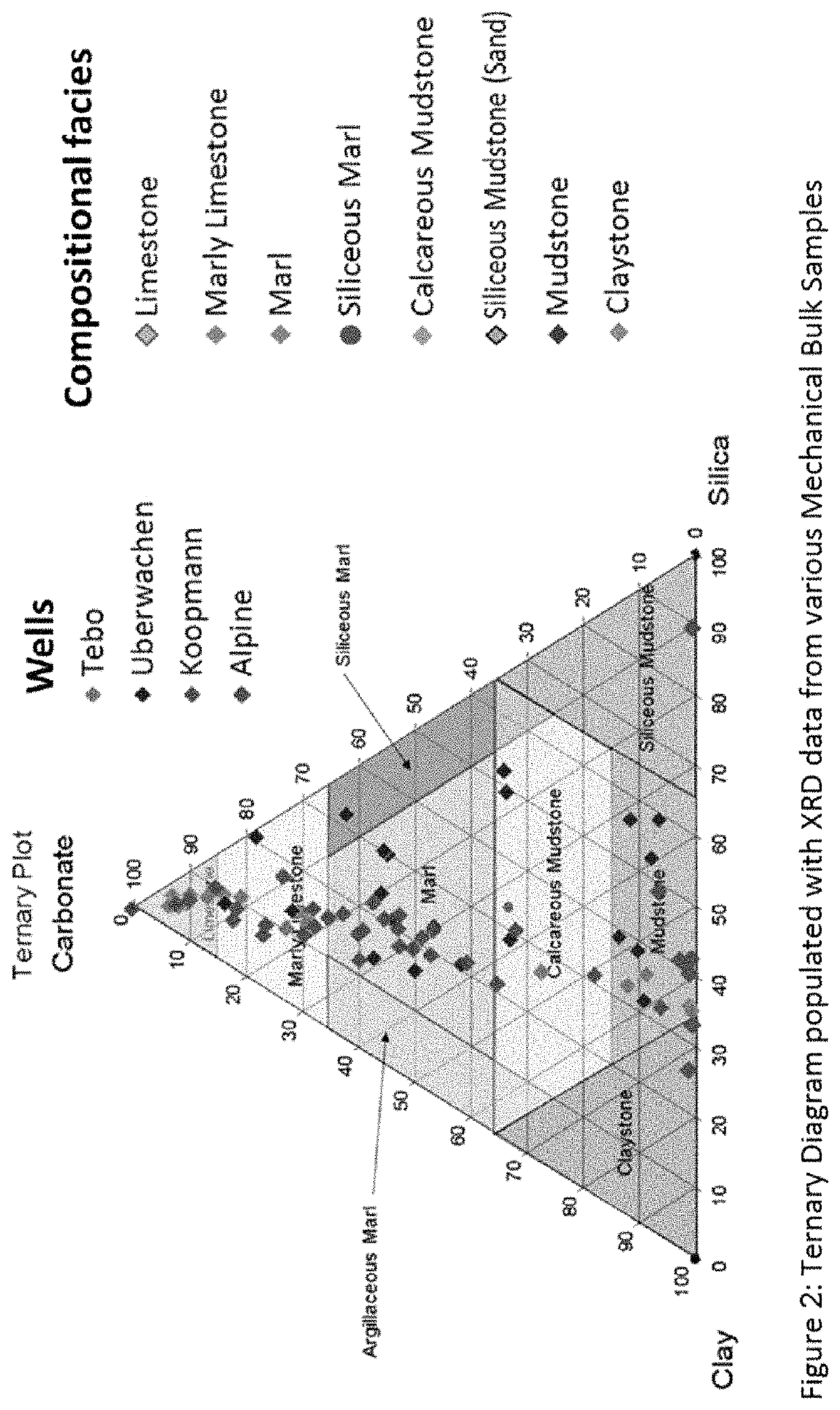Rock mechanical properties from drill cuttings
a technology of mechanical properties and drill cuttings, applied in the direction of design optimisation/simulation, instruments, borehole/well accessories, etc., can solve the problems of low drilling efficiency, low drilling efficiency, and lack of wellbore data linking back, so as to reduce drilling risk and cost, eliminate the need, risk and cost, and increase drilling efficiency
- Summary
- Abstract
- Description
- Claims
- Application Information
AI Technical Summary
Benefits of technology
Problems solved by technology
Method used
Image
Examples
Embodiment Construction
termine mechanical properties from logs is not accurate in shale gas systems. Therefore, if a quantitative link between compositional facies of cuttings and their mechanical properties can be established, models will be improved and well-drilling can be more efficiently accomplished and oil production and / or efficiencies maximized.
[0059]This invention provides systems and methods for determining rock mechanical properties from drill cuttings. The workflow is an integration of five distinct analysis steps, not necessarily performed in the provided order (e.g., the library may already be available, especially as the method gains acceptance and more and more data is accumulated):
[0060]1. Determining Rock Composition (% clay, silica and carbonate) from wellbore cuttings in a well of interest.
[0061]2. Developing and deploying a prescribed compositional facies model to suitably group data.
[0062]3. Perform rock mechanical characterization of whole core from nearby offset vertical wells. Al...
PUM
| Property | Measurement | Unit |
|---|---|---|
| depth | aaaaa | aaaaa |
| mechanical properties | aaaaa | aaaaa |
| time | aaaaa | aaaaa |
Abstract
Description
Claims
Application Information
 Login to View More
Login to View More - R&D
- Intellectual Property
- Life Sciences
- Materials
- Tech Scout
- Unparalleled Data Quality
- Higher Quality Content
- 60% Fewer Hallucinations
Browse by: Latest US Patents, China's latest patents, Technical Efficacy Thesaurus, Application Domain, Technology Topic, Popular Technical Reports.
© 2025 PatSnap. All rights reserved.Legal|Privacy policy|Modern Slavery Act Transparency Statement|Sitemap|About US| Contact US: help@patsnap.com



